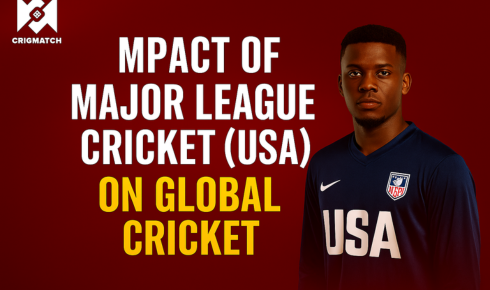When Major League Cricket (MLC) launched in the United States, many viewed it as an ambitious experiment. After all, the US is known more for baseball, basketball, and American football than for cricket. Yet, within just a few years, MLC has not only carved out its own space but has also begun to influence the global cricketing ecosystem.
The tournament represents more than just entertainment—it is a signal of how cricket is adapting to new markets, reaching new fans, and reshaping its international identity. Let’s examine how MLC is impacting global cricket and why its success matters far beyond American borders.
Expanding Cricket’s Global Footprint
For decades, cricket has been largely centered around traditional strongholds like India, England, Australia, and South Africa. With MLC, the US joins the map as a serious contender in the cricketing conversation.
- New Audiences: By tapping into America’s diverse population, especially communities from South Asia, the Caribbean, and the UK, MLC has found an instant fan base.
- Mainstream Exposure: Cricket has begun to feature in US sports conversations, gaining media coverage and recognition in a country previously considered a “non-cricketing” nation.
This expansion boosts the sport’s global relevance, making cricket a more universal game.
Attracting International Stars
MLC has successfully brought in high-profile players from around the world. While international leagues have long relied on overseas stars, the presence of elite cricketers in the US sends a powerful message: cricket is ready to compete for attention on the biggest sporting stage.
The participation of global names not only raises the tournament’s standard but also inspires younger US-based players. Sharing dressing rooms with established legends accelerates development and fosters professionalism.
Developing American Talent
Perhaps the most significant impact of MLC is the development of local talent. For years, cricket in the US remained fragmented, with little structure or pathways for aspiring players. MLC has changed that by:
- Providing Professional Contracts: Players now see cricket as a viable career option in the US.
- Building Infrastructure: Stadiums, academies, and training facilities are being developed to international standards.
- Creating Opportunities: Local cricketers are gaining exposure alongside international icons, sharpening their skills under competitive conditions.
This will benefit not only MLC but also the US national cricket team in future international tournaments.
Economic and Cultural Impact
The arrival of MLC has brought with it a surge of commercial interest. Sponsorships, broadcasting rights, and fan engagement have opened new revenue streams. For global cricket bodies, the US represents a lucrative market—massive viewership potential, strong brand partnerships, and untapped sponsorship opportunities.
Culturally, cricket in the US bridges communities. South Asian and Caribbean immigrants bring passion for the game, while American-born fans discover a new sport to follow. This cultural blend is a unique element of MLC that strengthens cricket’s global diversity.
Influence on Other Leagues
The success of MLC is also nudging other cricket boards to rethink their strategies. With a new competitive league in the mix, scheduling, player availability, and revenue distribution are all being reconsidered.
- Competition for Players: Like other international tournaments, MLC must navigate international calendars to attract top stars.
- Global Calendar Pressure: The presence of another high-profile league adds to ongoing debates about balancing domestic tournaments and international cricket.
Still, this competition is healthy—it pushes all leagues to innovate, improve standards, and deliver better experiences for fans.
Strengthening Cricket’s Olympic Bid
One of the most overlooked impacts of MLC is its potential role in cricket’s Olympic journey. With cricket reintroduced for the 2028 Los Angeles Games, having a strong domestic presence in the US boosts the sport’s credibility. MLC ensures that American audiences are already familiar with the game before it arrives on the Olympic stage.
This alignment could prove crucial in turning cricket into a truly global sport with Olympic recognition.
Challenges Ahead
While MLC’s rise is impressive, challenges remain:
- Sustaining Interest: Cricket must compete with established US sports for attention.
- Balancing Growth: Rapid expansion must be matched with quality infrastructure and long-term planning.
- Retaining Local Identity: MLC must ensure it nurtures American players, not just rely on overseas stars.
If addressed properly, these challenges could transform MLC into a model for cricket leagues worldwide.
Final Thoughts
Major League Cricket has redefined how the world views cricket in non-traditional markets. Its ability to attract global stars, nurture local talent, and engage new fans makes it one of the most influential cricketing developments of recent years.
For global cricket, the rise of MLC means expanded audiences, fresh opportunities, and greater cultural diversity. For the United States, it means joining the cricketing family not just as participants but as potential leaders in shaping the sport’s future.
To follow the latest updates, player insights, and tournament highlights, fans can rely on Cricmatch Login and Cricmatch Signup as gateways to stay connected with the growing world of cricket.




